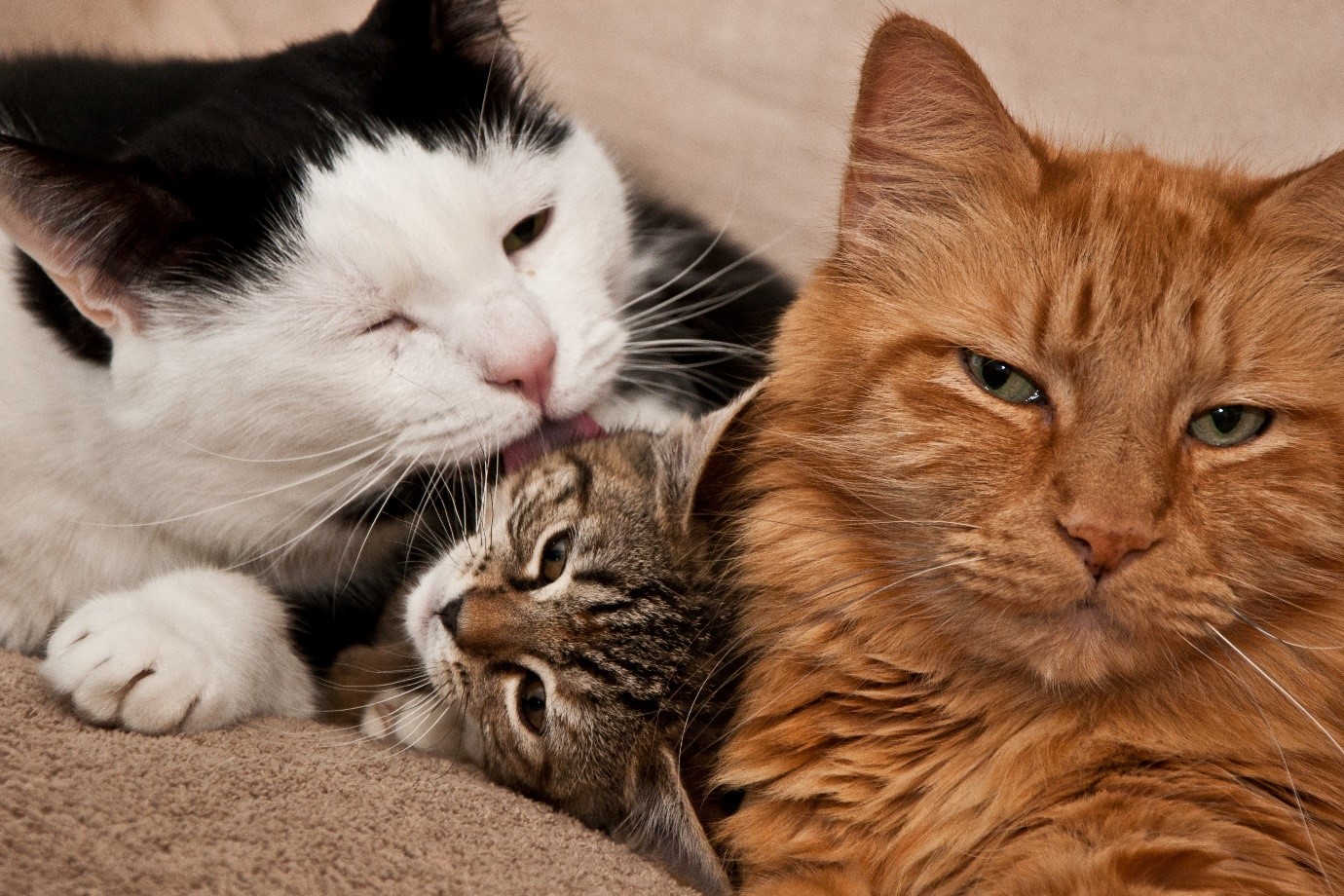Understanding Feral Cats & Taming Stray Kittens
Feral or Frightened?

Cats and kittens are commonly mistaken for being feral, meaning they have returned to their ‘wild’ instincts intended for survival, when they are actually only frightened and could thrive as a pet in a positive environment. Because of this misconception, it is vital to observe the animal’s behavior before determining how tame or feral the cat or kitten is.
Observe the animal when no one is around. Using a camera and leaving the room can be a great way to understand if the cat or kitten is comfortable with its surroundings, but not the human interaction yet. If a cat is just hissing but its body position is unchanged, it is most likely only afraid. On the contrary, if the animal has more of a wild look, with darting eyes and ears back and flat, that could indicate a feral nature.
Socializing Tactics
If a litter of very young kittens is found, first leave them where they are and observe them from a distance to see if a mother returns. If no mother returns, consider taking them in and bottle-feeding the kittens. There are many informative online resources that explain how to bottle-feed a kitten properly; a very well presented one is Kitten Lady. If a cat was a ‘bottle baby’ as a kitten it will grow up already well socialized and bonded with humans. Many times the cat will be more dog-like as a result of having had no cat mom to guide its behavior.
Like every wild animal, a feral kitten can easily sense fear and will react to that with increased fear of its own. Because of this truth, it is important to approach the animal without showing fear. Wear protective gloves so that you are not apprehensive about handling the kittens. Be gentle, but firm with the animals. In a litter, the kitten that seems boldest will be the easiest to socialize because it is the least afraid, as exhibited by its confidence, and will most likely be the first kitten to become comfortable being handled.
Speak to the kittens in soft tones and carefully push their limits by getting closer to them with every visit to their cage. They animals may recoil, but be persistent. Within the same litter, there can be different levels of socialization with some kittens taking longer to become comfortable and some never progressing as far as others. It is critical to work with the animals immediately after you catch them. The earlier you begin to make them comfortable with humans the quicker the process will be.
If one kitten is purring while being held, then hold another kitten as well. The second animal will be comforted knowing the other is at ease. Transitions can be challenging if a previously feral kitten or cat is adopted. The animal may have warmed up to one person, but may have difficulty adjusting to another. If this is the case, have the person who the cat is most comfortable with hand it to its new owner. This process can show the cat that their new owner is trustworthy.
House Dynamics
Adding or removing a cat from an environment with other cats can be very traumatic for the animals. Both male and female cats may mark their territories or misbehave in the case they feel their position is threatened by the newcomers. Existing cats will know, without even seeing the animal, that a new cat is in the house and may react. Be observant of the preexisting cats and be certain to spend time reassuring them.
When bringing home rescue cats separate them from preexisting house cats to ensure that no contagious health issues are spread between the animals. Cats should always be up to date on vaccines and handlers should wash their hands between touching the different groups of animals to help limit cross contamination.
Many kittens and cats will make great progress given the love and care they need, but some cats will stay in a feral or semi-feral state. If this is the case, a barn home may be ideal for them. In this setting the cats have space to roam, are cared for by humans, and they help their owners by keeping pesky critters at bay.

